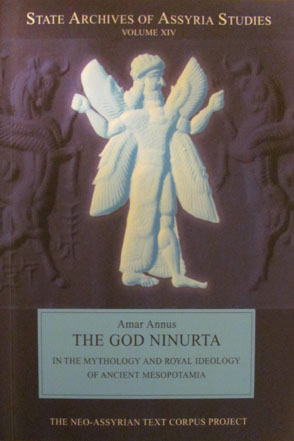The God Ninurta in the Mythology and Royal Ideology of Ancient Mesopotamia
Amar Annus
The current investigation has been divided into three main chapters. In the first two chapters, the primary focus is the relationship between Ninurta and kingship. The first chapter gives a diachronic overview of the cult of Ninurta during all historical periods of ancient Mesopotamia. This chapter shows that the conception of Ninurta’s identity with the king was present in Mesopotamian religion already in the third millennium BC. Ninurta was the god of Nippur, the religious centre of Sumerian cities, and his most important attribute was his sonship to Enlil. While the mortal gods were frequently called the sons of Enlil, the status of the king converged with that of Ninurta at his coronation, through the determination of the royal fate, carried out by the divine council of gods in Nippur. The fate of Ninurta parallels the fate of the king after the investiture.
- Description
- Table of Contents
- Subjects
Religious syncretism is studied in the second chapter. The configuration of Nippur cults left a legacy for the religious life of Babylonia and Assyria. The Nippur trinity of the father Enlil, the mother Ninlil, and the son Ninurta had direct descendants in the Babylonian and Assyrian pantheon, realized in Babylonia as Marduk, Zarpanitu, and Nabu, and as Assur, Mullissu, and Ninurta in Assyria. While the names changed, the configuration of the cult survived, even when, from the eighth century BC onwards, Ninurta’s name was to a large extent replaced by that of Nabu.
In the third chapter various manifestations or hypostases of Ninurta are discussed. Besides the monster slayer, Ninurta was envisaged as farmer, star and arrow, healer, and tree. All these manifestations confirm the strong ties between the cult of Ninurta and kingship. By slaying Asakku, Ninurta eliminated evil from the world, and accordingly he was considered the god of healing. The healing, helping, and saving of a believer who was in misery was thus a natural result of Ninurta’s victorious battles. The theologoumenon of Ninurta’s mission and return was used as the mythological basis for quite a few royal rituals, and this fact explains the extreme longevity of the Sumerian literary compositions Angim and Lugale, from the third until the first millennium BC. Ninurta also protected legitimate ownership of land and granted protection for refugees in a special temple of the land. The “faithful farmer” is an epithet for both Ninurta and the king.
Kingship myths similar to the battles of Ninurta are attested in an area far extending the bounds of the ancient Near East. The conflict myth on which the Ninurta mythology was based is probably of prehistoric origin, and various forms of the kingship myths continued to carry the ideas of usurpation, conflict, and dominion until late Antiquity.
Acknowledgements
Abbreviations
List of Illustrations
Introduction
1. Ninurta’s Role in Ancient Mesopotamian Kingship
Ninurta in the Early Sources
The Early History of Mesopotamian Kingship
The Ur III and Isin-Larsa Periods
Evidence for the Ritual of ‘Determination of Royal Fate’ at Nippur
Ninurta’s ‘Journeys’
Babylonia in the Second Millennium
Ninurta in Assyria
The Late Babylonian Nabu
2. Ninurta in the Royal Rituals and Ideology
Ninurta as the Keeper of Royal Regalia
Nabu at the New Year Festival
Ninurta’s akitu at Nippur
Ninurta’s akitu and the Sacred Marriage
Syncretism in the Cultic Togography
Ninurta as Scribe and the Royal Investiture
Triumphal akitu of Assyria
‘Cosmic Battle’ in the Assyrian Royal Inscriptions
The Royal Hunt
3. Ninurta in Mythology
Ninurta and the Monsters
Ninurta’s Mission and Return
Ninurta and the Deluge
Ninurta as Star and Arrow
Ninurta as Healer and Helper in Misery
‘Ninurta is My Shelter’
Tablet of Destinies
Ninurta as Farmer
Ninurta as Tree
Ninurta and the Mountain of Stones
The Quest of Gilgamesh and the Heroic Deeds of Ninurta
Ninurta Mythology and the Myths of Kingship
Epilogue: Continuity of Mesopotamian Traditions in Late Antiquity
Conclusions
Mailing List
Subscribe to our mailing list and be notified about new titles, journals and catalogs.




